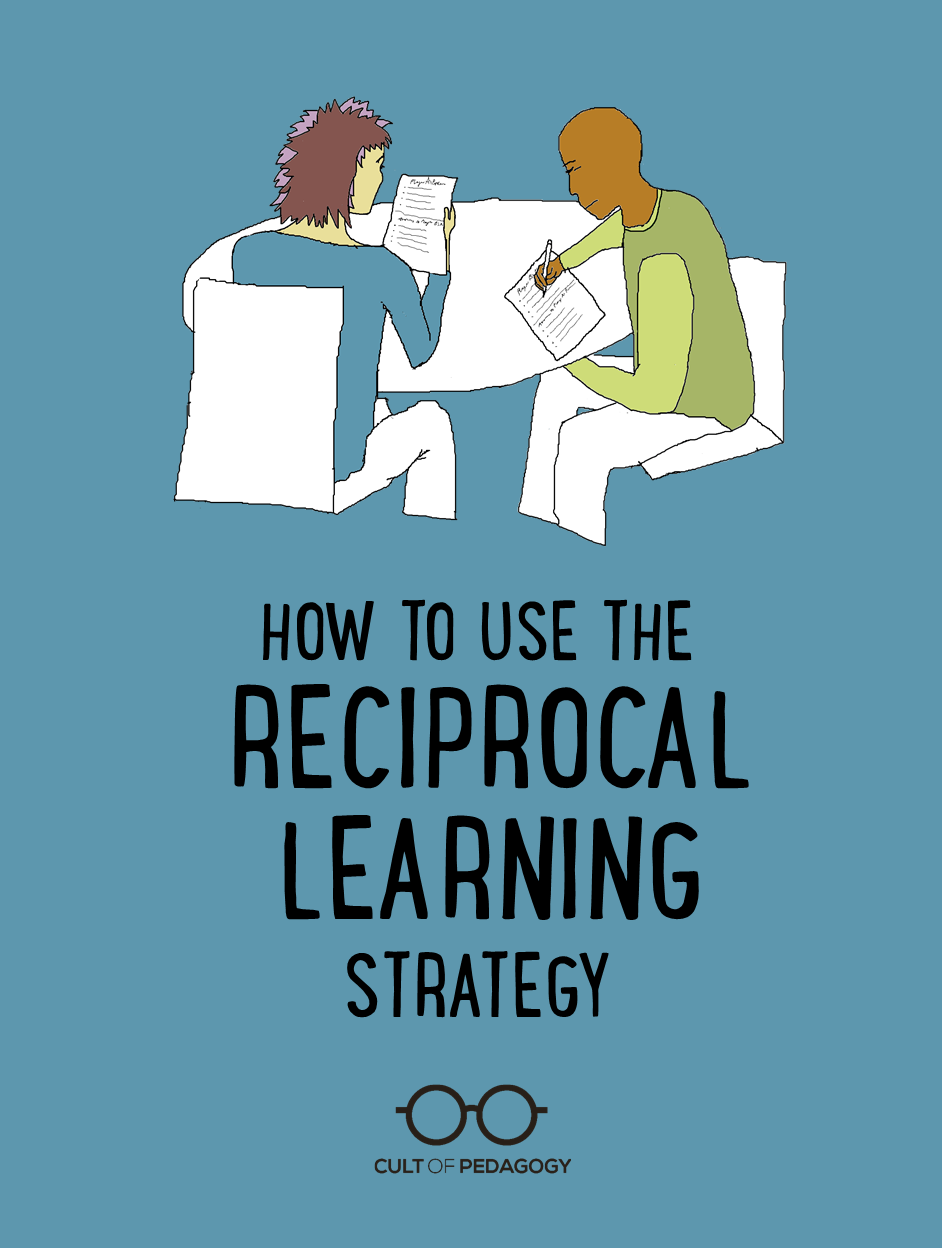How to Use the Reciprocal Learning Strategy

So you just taught your students something new. Maybe it’s a math operation, a bit of music theory, or the conjugation of an irregular verb form in Spanish. Now you’re ready to get them practicing. One standard approach is to assign written exercises. Fine. That’s perfectly fine. Except when it’s not, because you do it every day, and students are dying to interact more, move more, talk more, do something else.
Last fall, I showed you how to take written exercises and build in more movement and interactivity with Chat Stations. Now, I offer another alternative: Reciprocal Learning, a cooperative structure that takes “working in pairs” up a notch.
It goes a little something like this:
- Every pair consists of a “Student A” and a “Student B.”
- Each student has their own set of problems or exercises to work on. Here’s the twist: Student A has the answers to Student B’s problems, and Student B has the answers to Student A’s problems.
- Students take turns coaching each other through the problems, not giving the answers, but helping their partner reach the correct answer on their own.
This arrangement, if done right, will help students become more self-directed, increase academic gains, and improve the quality of social interactions.
Here’s a quick demonstration:
Reciprocal Learning is one of twenty research-based strategies outlined in Silver, Strong, and Perini’s excellent book, The Strategic Teacher: Selecting the Right Research-Based Strategy for Every Lesson (Bookshop.org | Amazon).
The book also describes two variations on this strategy. The first is Peer Reading, where students take turns answering response questions to a long piece of text. The second is Peer Problem Solving, where each person has a single, complex problem to solve. What’s cool about this variation is that all the “A”s and all the “B”s meet beforehand in a “coaches’ meeting” to work through the steps of their partners’ problem and strategize for the best ways to coach their partners through it.
If you like Reciprocal Learning, take a look at my overview of Concept Attainment, another strategy from this book. Although many of the techniques in the book have simple-sounding names — which makes people think they understand the strategies without really studying them — they have much more structure and complexity than their names imply. For teachers who are visual or kinesthetic learners, reading the book’s description of the techniques sometimes doesn’t quite get the job done, which is why I’m putting these videos together: The strategies are too good to go unused.
Try it out and let me know what you think — and as always, if you have tips to share or questions to ask, add them in the comments section so we can all learn together. ♦